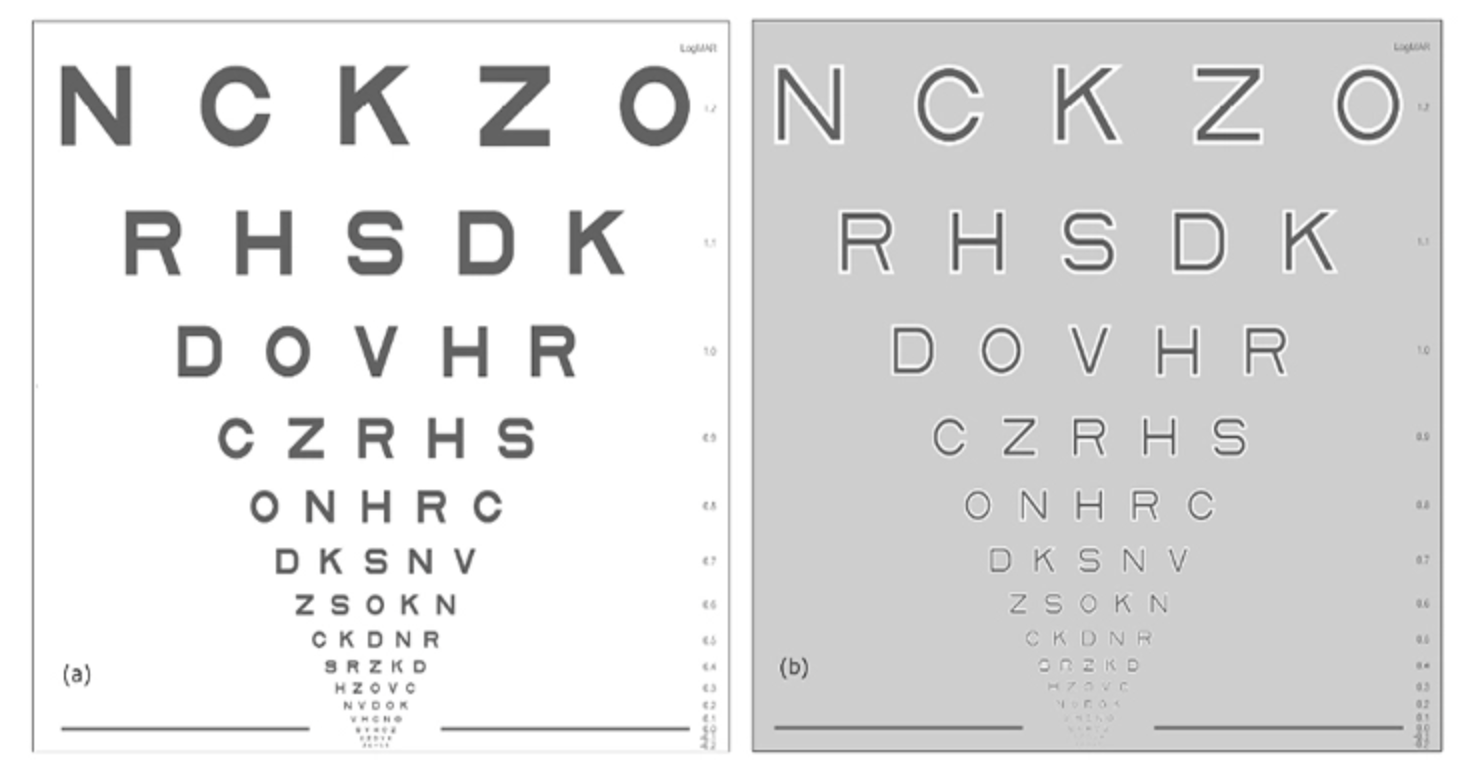Vanishing letters to diagnose AMD sooner
New test featuring black and white letters is able to catch the first signs of age-related macular degeneration (AMD) sooner than ever before.
|
The Moorfields acuity chart features letters created from fine black and white stripes. However, unlike the standard chart, these two-coloured, high-spatial frequency letters appear to vanish when they are too small to be recognised. The effect was first described in the 1970s, but has not been used clinically until the PhD project by University College London student Nilpa Shah. This feature means the Moorfields chart is sensitive enough to diagnosis AMD early and monitor its progression far more precisely than standard letter charts. Download the acuity test booklet below |
The Moorfields chart was tested, in Fight for Sight-funded research, on 80 AMD patients and 38 normal-sighted peers in conjunction with the standard chart.
Each were given a visual acuity score based on the number of letters they could read before making four mistakes on one line, in the study published in the British Journal of Ophthalmology.
Patients with AMD and better acuity were able to progress 4.5 lines further, on average, on the standard chart as compared to the new Moorfields test. People without AMD had a difference of 1.5 lines, when visual acuity was comparable.
Research supervisor, Professor Roger Anderson, told OT that earlier diagnosis would lead to better eye health outcomes. He added: “We can enter patients on treatment regimes more quickly, and monitor them more reliably than ever before.”
Peter Allen and Associates is selling the new charts, which will be tested in a larger clinical trial in future.
The initial aim in producing the chart was for a tool with high repeatability, Professor Anderson said. The chart’s potential for diagnosing and monitoring diabetic retinopathy and keratoconus are also being evaluated.
“It will not replace the normal chart for refraction, but it seems to be very sensitive to neural damage,” Professor Anderson noted.
He said a patient’s comparative results between the standard and Moorfields chart will also yield invaluable insights.
Professor Anderson envisioned that it could be a commonly used tool for optometrists in future, especially “if optometrists become more involved in monitoring eye diseases.”
Each were given a visual acuity score based on the number of letters they could read before making four mistakes on one line, in the study published in the British Journal of Ophthalmology.
Patients with AMD and better acuity were able to progress 4.5 lines further, on average, on the standard chart as compared to the new Moorfields test. People without AMD had a difference of 1.5 lines, when visual acuity was comparable.
Research supervisor, Professor Roger Anderson, told OT that earlier diagnosis would lead to better eye health outcomes. He added: “We can enter patients on treatment regimes more quickly, and monitor them more reliably than ever before.”
Peter Allen and Associates is selling the new charts, which will be tested in a larger clinical trial in future.
The initial aim in producing the chart was for a tool with high repeatability, Professor Anderson said. The chart’s potential for diagnosing and monitoring diabetic retinopathy and keratoconus are also being evaluated.
“It will not replace the normal chart for refraction, but it seems to be very sensitive to neural damage,” Professor Anderson noted.
He said a patient’s comparative results between the standard and Moorfields chart will also yield invaluable insights.
Professor Anderson envisioned that it could be a commonly used tool for optometrists in future, especially “if optometrists become more involved in monitoring eye diseases.”
Contact us
|
Social MediaLegal |
Find us |
©
PA Vision 2023 All Rights Reserved - Zapped Digital

